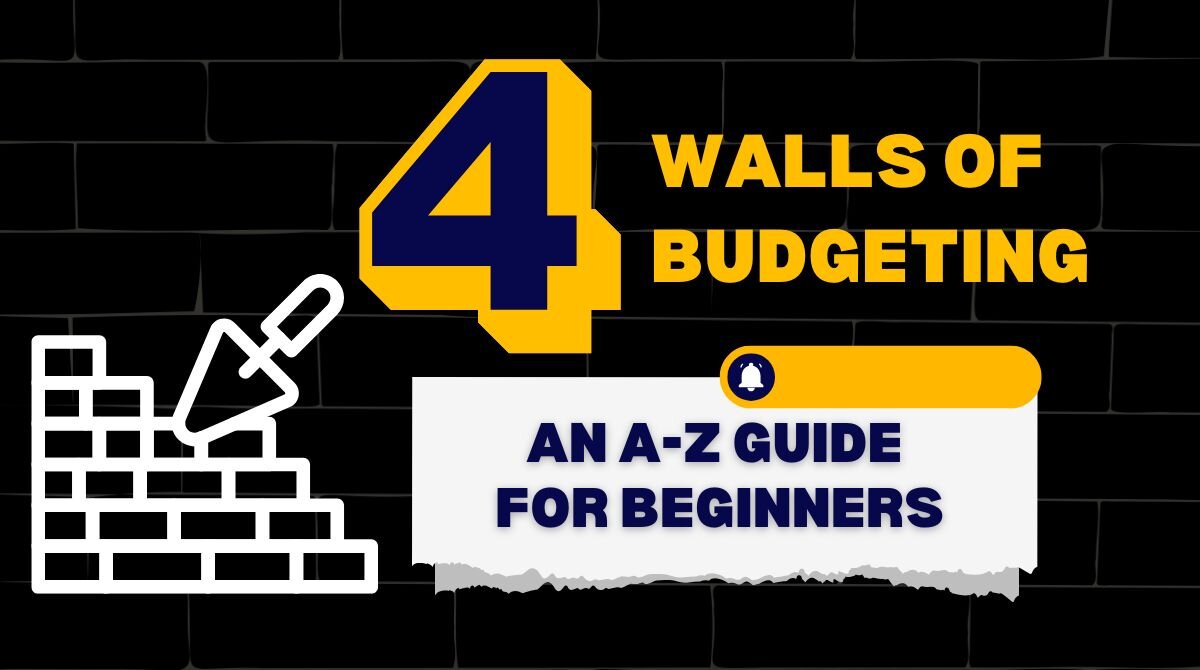The 4 walls of budgeting food, utilities, shelter, and transportation are the first expenses you secure when money is tight. Popularised by personal-finance coach Dave Ramsey, the framework mirrors how a house keeps you safe: without solid walls, the whole structure collapses.
Taken together, these four categories already absorb almost two-thirds of the average U.S. household’s annual outlay (housing 32.9 %, transportation 17.0 %, food 12.9 %), proof that they truly are the non-negotiables. Handle them first, and every other financial goal becomes markedly easier.
Ready to see how this simple idea can anchor your own plan? Let’s start with a clear definition.
1. What are the 4 walls of budgeting?
Feeling overwhelmed by spreadsheets and spending categories? Imagine if you could strip budgeting down to just four life-or-death essentials. That is precisely what the 4 walls method does: it tells you to fund food, utilities, shelter, and transportation, nothing else, until those costs are fully covered.
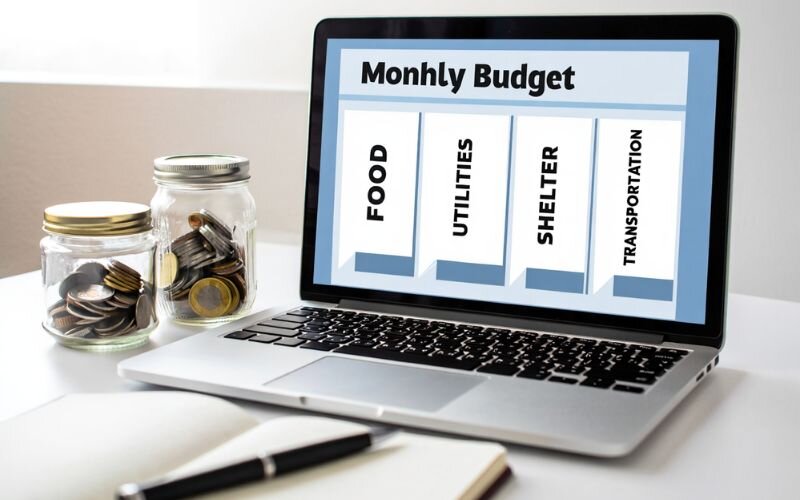
Think of building a house in a storm: before choosing paint colours, you erect four sturdy walls so the roof doesn’t cave in. In a financial crisis, these expenses are your structural support, ensuring you can eat, keep the lights on, stay housed, and commute to earn your next pay cheque.
Only after these pillars are secure do additional goals, debt payoff, investing, and even vacations belong in the conversation.
2. Why are the four walls important in budgeting?
Understanding why the four walls matter is just as important as knowing what they are. These core expenses do more than just keep you alive; they serve as the cornerstones of financial stability, clarity, and long-term resilience.
2.1. They provide stability in a financial crisis
When life throws a curveball, like job loss, reduced hours, or unexpected medical bills, the 4 walls of budgeting act as your financial life raft. Instead of panicking over every expense, you immediately know what must be protected: food on the table, the lights and heat running, a roof over your head, and a way to get to work.
This clarity turns chaos into control, offering peace of mind when money is tight and uncertainty is high.
I experienced this personally during the pandemic when freelance income dried up almost overnight. Instead of spiraling, I cut all non-essentials and focused on just four things: groceries, rent, electricity, and my metro pass. It wasn’t easy, but it kept me afloat and gave me a sense of structure in the middle of the storm.
2.2. They build a strong foundation for all financial goals
You can’t build wealth if you’re constantly struggling to survive. Prioritizing the four walls ensures your most basic needs are met consistently, creating a solid base from which to plan and grow.
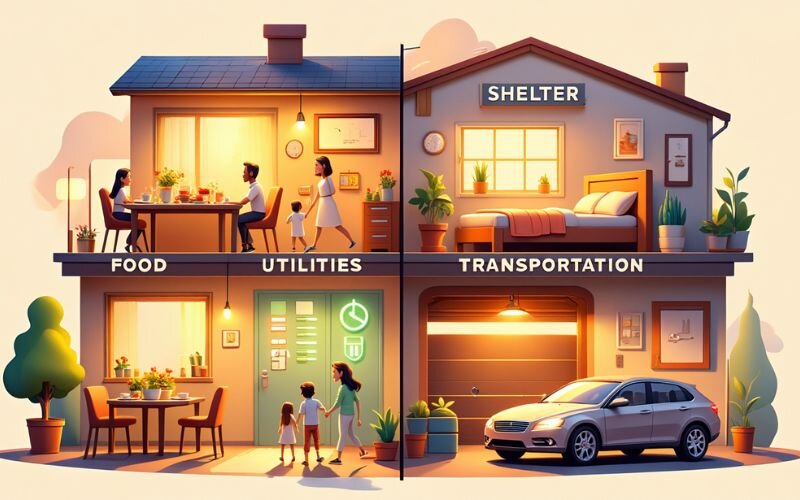
Whether your goal is to eliminate debt, build an emergency fund, or invest for the future, these objectives are only achievable once you’ve secured these essentials. In essence, mastering the basics is the first step toward financial independence.
2.3. They simplify spending decisions
One major source of financial stress is decision fatigue, the exhaustion from constantly debating what to pay for and what to cut. The four walls method removes that guesswork.

Ask yourself one simple question: “Does this expense fall within the four walls?” If the answer is no, it can wait. This framework helps new budgeters avoid overwhelm, focus on what truly matters, and regain a sense of direction in their finances.
Don’t miss this related guide:
3. What are the 4 walls of budgeting?
Now that you understand why the four walls matter, it’s time to break down what each one includes and which comes first when allocating your income. These aren’t listed randomly. The priority order matters, especially in moments of financial stress.
3.1. Wall #1: Food
Your first financial priority is food, but not restaurant meals or takeout coffee. This wall covers basic groceries that allow you to prepare meals at home. It’s about sustenance, not indulgence.

Included:
- Fresh vegetables and fruits
- Rice, grains, and pasta
- Eggs, dairy products
- Lean meats and plant-based proteins
- Cooking oil and spices
Not included:
- Dining out or food delivery
- Alcohol and luxury snacks
- Specialty coffee drinks
Distinguishing between needs and wants is key here. Your goal is to nourish your body, not treat yourself, at least not yet.
Further reading:
3.2. Wall #2: Utilities
Utilities are the services that make your shelter livable. This wall includes only essential bills needed for health, hygiene, and safety.
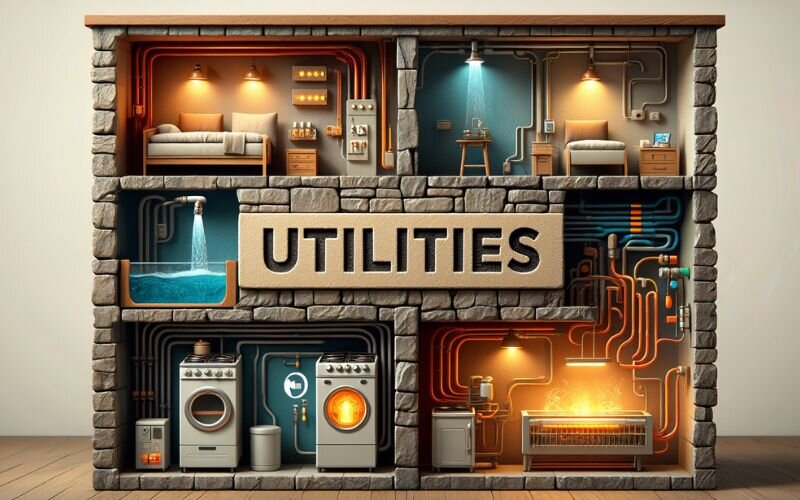
Included:
- Electricity
- Water and sewage
- Natural gas or heating oil
- Basic internet (if required for remote work)
Not included:
- Cable or satellite TV
- Premium streaming subscriptions
- High-speed internet bundles (unless necessary for income)
Be honest about what’s essential and what’s simply convenient. If cutting it doesn’t put your well-being or job at risk, it likely isn’t part of this wall.
3.3. Wall #3: Shelter
The third wall is your monthly housing cost, the amount you pay to stay legally and physically sheltered. This is non-negotiable and must always be funded.
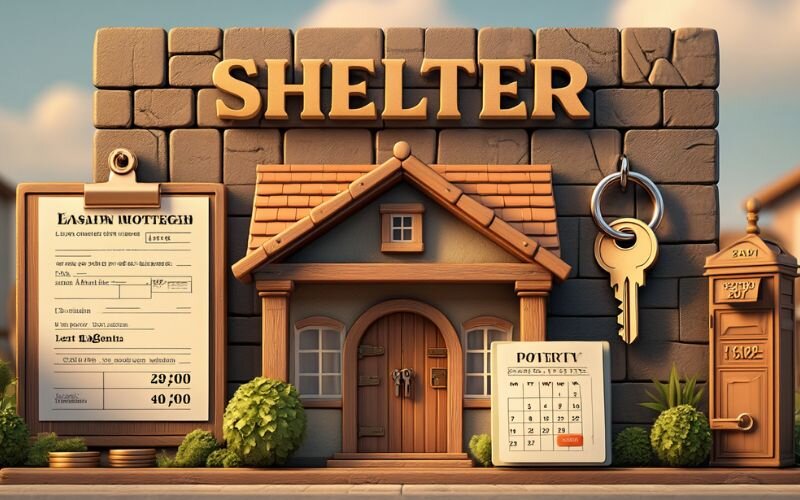
- If you rent, this is your full monthly rent payment.
- If you own your home, it includes your mortgage principal, interest, property taxes, and insurance.
Do not include non-essential upgrades or decor here. A minimalist but functional home is sufficient at this stage of budgeting.
3.4. Wall #4: Transportation
Transportation is your ability to earn an income. This wall includes all necessary costs that allow you to get to your job safely and reliably.
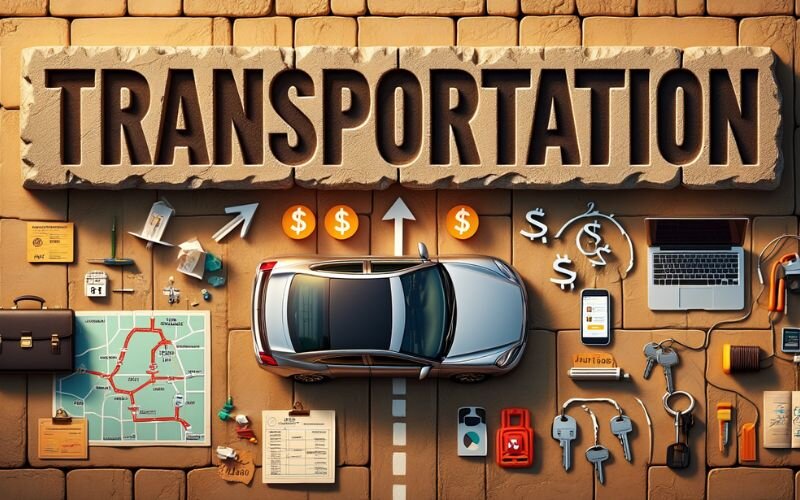
Included:
- Gas or fuel
- Car insurance
- Routine maintenance (oil changes, brakes)
- Public transit passes
Not included:
- Payments on a luxury vehicle
- Rideshare services are used for comfort or convenience
- Road trips or non-essential travel
The goal is functionality, not prestige. If your car gets you from point A to point B safely, it’s doing its job, even if it’s not flashy.
4. How to apply the 4 walls of budgeting in 3 simple steps
Knowing what to prioritize is one thing; applying it to your actual income is another. This section walks you through how to translate the four walls into practical budgeting decisions. Follow these three steps to build a budget that protects your essentials first, even when income is limited.
4.1. Step 1: Calculate your total take-home pay
Before allocating anything, you need to know your net income, the money that actually lands in your account after taxes and deductions. This is often called take-home pay.
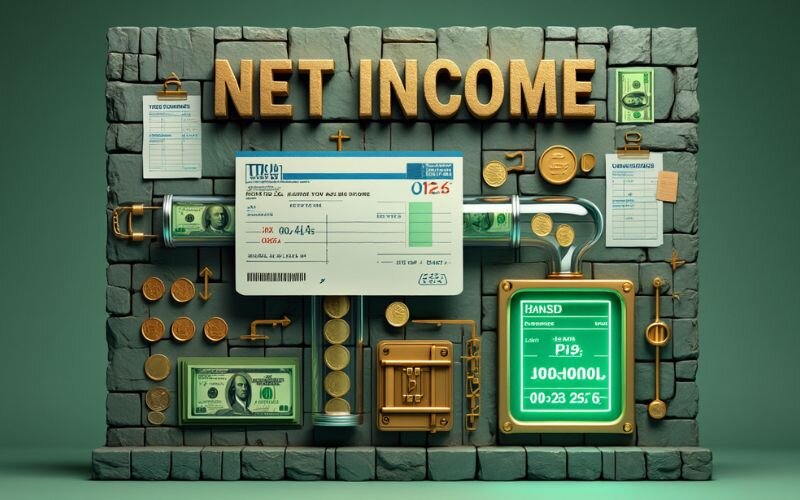
To find this number, check your pay stub or bank statement. If you’re paid biweekly, multiply by two to estimate your monthly income. For freelancers or irregular earners, use a conservative monthly average from the past 3–6 months.
Read more related content:
4.2. Step 2: Prioritize and allocate funds to the four walls first
Now, calculate how much of your take-home pay is needed to fully cover each of the four walls. Don’t guess; use last month’s bills, receipts, or statements as a reference.
Fill in a simple table like the one below to visualize your essential costs:
| Four walls item | Estimated cost |
|---|---|
| Wall 1: Food | $_____ |
| Wall 2: Utilities | $_____ |
| Wall 3: Shelter | $_____ |
| Wall 4: Transportation | $_____ |
| Total 4 Walls Cost | $_____ |
Make sure these amounts are realistic, but firm. Once you have this total, you now know the minimum monthly income required to keep your financial foundation intact.
4.3. Step 3: Decide what to do with the remaining money
Use this simple formula:
Take-home pay – Total 4 walls cost = Remaining funds
This remainder is your flexible budget. Depending on your financial situation, you can now direct it toward:
- Paying off debt (especially high-interest loans)
- Building an emergency fund
- Covering variable costs (e.g., phone, insurance, childcare)
- Setting aside for longer-term goals (investing, travel, education)
Think of the four walls as your financial “needs,” and the rest as “choices.” This mindset not only keeps you protected—it empowers you to grow.
5. What’s next? What to do after securing your 4 walls
Once the four walls are covered, your budget enters a new phase, from surviving to building. This is where you begin making meaningful progress toward financial security and freedom.
5.1. Build your starter emergency fund
An emergency fund is your first line of defense against future setbacks. After the four walls are intact, your top priority is saving a starter emergency fund, typically $1,000 or one month of essential expenses.
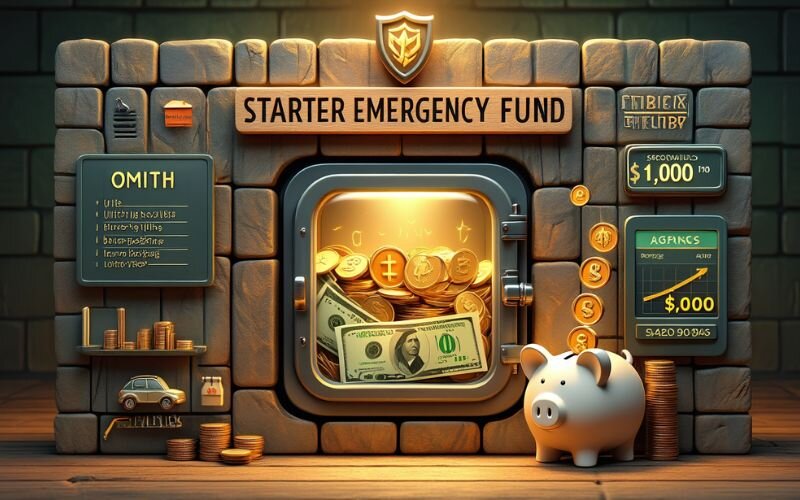
This cash cushion protects you from slipping back into crisis mode when minor disruptions occur, like a flat tire, a doctor’s visit, or a broken laptop.
5.2. Pay off high-interest debt
With a safety net in place, the next step is to eliminate high-interest liabilities, especially credit card balances and personal loans. These debts not only drain your income but also block long-term wealth-building.
Consider using the debt snowball method: list your debts from smallest to largest and pay them off in order, gaining momentum as you go.
Beyond the math, this approach gives you psychological wins that keep you motivated and disciplined.
5.3. Start saving and investing for the future
Now you’re ready to look forward. Begin setting aside money toward long-term goals such as:
- Contributing to a retirement plan (e.g., 401(k), IRA)
- Saving for a down payment on a home
- Starting a college fund for your children
- Investing in index funds or ETFs
These aren’t urgent needs, but they’re essential for building wealth and reducing financial anxiety over time. The earlier you begin, the more powerful compounding works in your favor.
6. Frequently asked questions (FAQ)
The correct priority is: 1. Food, 2. Utilities, 3. Shelter, 4. Transportation. You must feed yourself and maintain essential services before worrying about housing or how to get to work. This order reflects both survival logic and financial function.
The 4 walls method is need-based and non-negotiable, designed for tough times or beginners. In contrast, the 50/30/20 rule is percentage-based, ideal for stable finances. The four walls usually fall within the 50% “needs” category of that rule.
The principle stays forever, but the strict method doesn’t. Once your finances stabilize, you can expand your budget for savings, investing, and lifestyle, but always fund the four walls first.
7. Conclusion
Mastering the 4 walls of budgeting is the first and most crucial step in gaining control of your finances. By focusing on food, utilities, shelter, and transportation, in that order, you build a resilient foundation that protects your most essential needs, especially during uncertain times. Once these basics are secured, you’re in a stronger position to pay off debt, build savings, and work toward long-term financial goals with clarity and purpose.
This isn’t just about surviving; it’s about creating structure, reducing stress, and making smarter decisions with every dollar you earn.
If you found this guide helpful, we invite you to explore more practical strategies and tools in our Budgeting Strategies section at H2T Funding. Whether you’re just starting out or looking to refine your money habits, our in-depth articles on personal finance, budgeting models, and wealth-building techniques will support your journey, starting with the fundamentals like the 4 walls of budgeting.

